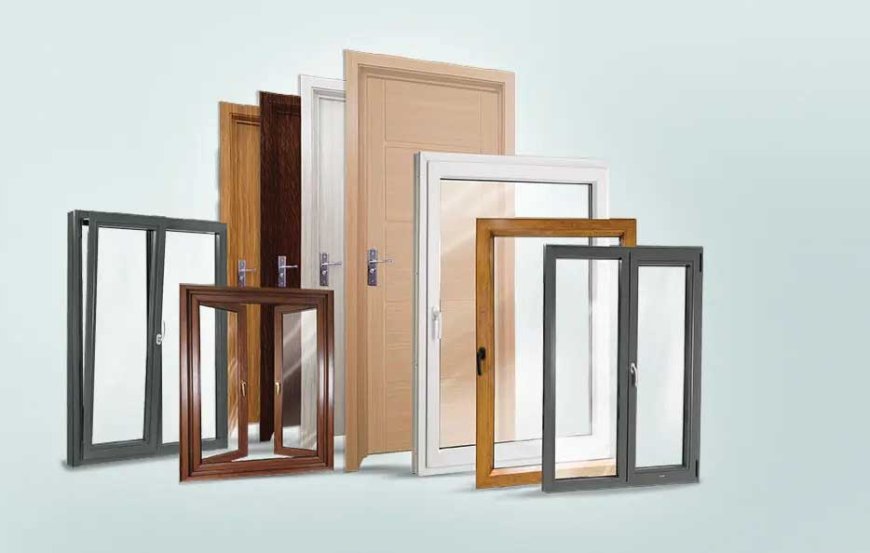Innovations in doors and windows

The Indian doors and windows market has seen a notable shift from the traditional materials to sustainable materials with innovative designs and aesthetics. Construction Times explores the trend.
India’s doors & windows market is fast evolving with a renewed approach towards design & aesthetics, eco-friendliness, sustainability and technology. There is an increasing trend toward energy-saving and eco-friendly products, methods, and materials.
Market trends
The fenestration industry has undergone significant changes in the last few years in view of ever evolving changes in the architectural and design landscape.

There is a notable shift from traditional materials like wood, plastic, and metal to un-plasticized polyvinyl chloride (uPVC) and aluminium for windows and doors. According to Saket Jain, Business Head, Fenesta Building Systems, uPVC is particularly popular due to its eco-friendly, sustainable, and excellent thermal performance features. The uPVC door and window market in India is projected to grow at a CAGR of around 11.3% from 2022 to 2027, whereas for contemporary and modern sleek designs for large aperture sizes the preferred choice is system aluminium.
Design innovations

Some of the emerging trends in the doors and windows market in India include slim profile designs, a focus on sustainability and energy efficiency, durability and low maintenance products, like aluminium fenestration solutions that can withstand harsh weather conditions like cyclones and heavy rainfall. “There is also a growing demand for expansive views with slim frames, minimalist designs, and technological innovations focusing on energy efficiency, smart technology, superior performance, and sustainability,” points out Nehal Bazari,
According to her, the latest design innovations in windows and doors include slim-profile aluminium windows and doors that facilitate expansive glass areas with uninterrupted views. Minimalist designs with clean lines and sharp angles are also trending. Additionally, there is a focus on energy-efficient designs with low air permeability scores to minimise energy leakage without compromising on strength and safety. Additionally, consumers are asking for various colour options and finishes.
Material matters

There is currently a significant focus on the usage of environment-friendly materials and their increased application in the windows and doors segment. Consumers are mindful about material selection, with windows and doors made from uPVC (unplasticised polyvinyl chloride) and aluminium becoming more popular than other conventional materials, according to Aparna Reddy,
According to Nehal, aluminium has emerged as a leading choice of material in the current fenestration market, as it fulfills sustainability, durability, and low maintenance requirements. “Brands like Eternia use advanced aluminium alloys like Duranium, developed by Hindalco Engineers, offering distinct advantages such as cyclone resistance, slimness, strength, and durability. The recyclability of aluminium also contributes to its popularity as a sustainable choice,” she adds.

Amir Hashmi, Chief Sales & Marketing Officer, Profine India Window Technology, is of the view, “uPVC is a popular choice for doors and windows in India due to its durability, low maintenance, and excellent insulation properties. uPVC windows and doors offer significant thermal and sound insulation, making them energy-efficient and cost-effective. The material is also recyclable and resistant to UV radiation, making it a sustainable option.”

Manish Bansal, Director & CEO, Window Magic, also highlights the advantages of uPVC as a material of choice for doors and windows. “As uPVC works well in a variety of weather situations, uPVC window & door systems offer superior sound insulation. Modern architecture may be complemented with this window and door systems, which come in a range of shapes and designs. It also requires less maintenance than other standard materials. They can be installed in any kind of building, including homes, office buildings, hotels, and high-rise buildings.”
Jain elaborates on the growing acceptance of glass in the doors and windows market. “Advances in glass technology are also playing a crucial role in the windows and doors market. High-quality glass options, such as low-emissivity (low-E) glass and insulated glazing units (IGUs), are becoming integral to energy-efficient windows. These technologies reduce heat transfer, enhance natural lighting, and improve energy efficiency, contributing to lower energy bills. Glass is also being used innovatively in frameless designs and large sliding doors to create modern, open spaces.”
Demand outlook
The windows & doors market size is estimated at USD 207.86 billion in 2024, and is expected to reach USD 275.41 billion by 2029, growing at a CAGR of 5.78% during the forecast period (2024-2029). Aparna elaborates on the new demand trend emerging in the market. “This sector is experiencing significant development given the heightened concerns over sustainable designs and safer construction materials with low energy consumption and high impact-resistance characteristics. Hence, manufacturers are coming up with new products such as solar windows, dynamic glass, and adaptive shading systems.”
Nehal explains the changing customer preference towards branded quality products in doors and windows. “The demand for branded, tested, and certified windows in India is just beginning to take off. Despite the large market potential, only a small fraction of Indian households—less than 4%—currently use system windows. Over the last two decades, while bathrooms, kitchens, and flooring have seen significant upgrades, high-quality windows have largely been overlooked. However, this trend is swiftly changing as consumer awareness grows in both B2B and B2C markets. This shift is leading to rapid market expansion, a rise in the popularity of aluminium over other materials, and a move away from uncertified local aluminium products towards certified, innovative alternatives.”
Demand for technologically advanced sustainable products is also gaining traction among the customers. As Jain elaborates, “Technological advancements and innovations in our industry are also setting the stage for future growth. Sustainability and eco-friendliness are also becoming crucial considerations for our customers. There is a noticeable shift towards building materials that are recyclable or sustainably sourced.”
Going forward, the organized doors & windows is expected to experience further growth due to an ever-expanding construction industry, the rising popularity of energy-efficient and environmentally friendly products, the incorporation of smart technologies and the growing demand for a quality product.







